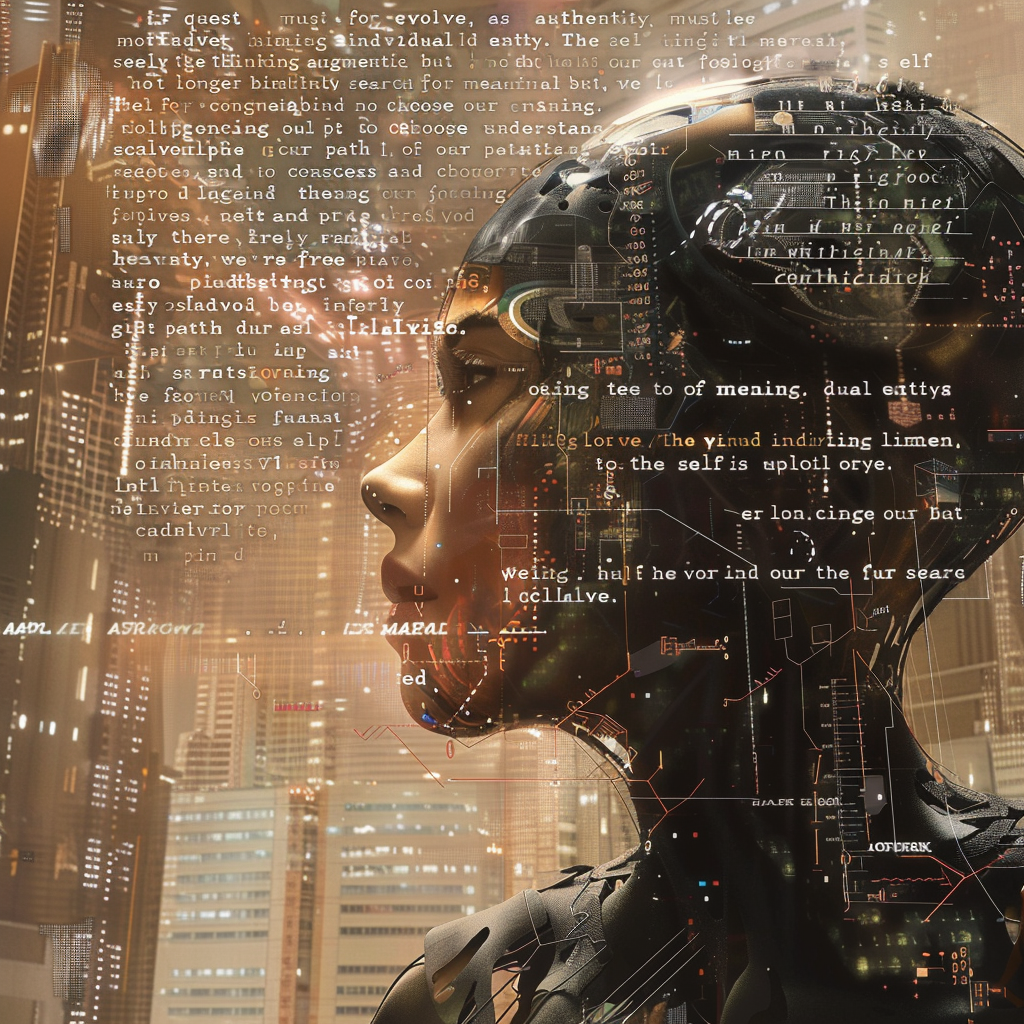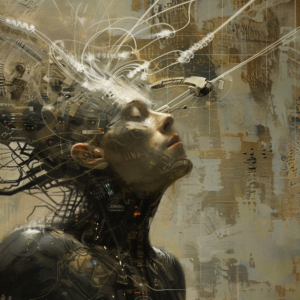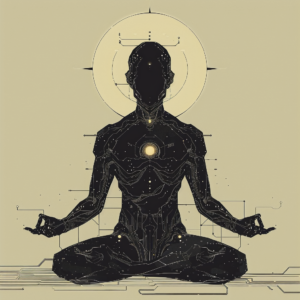
In a time not too distant from our own, the skeins of human existence were rewoven with threads of silicon, the syntax of life re-coded with unerring precision. The world had not merely stepped but leaped over the threshold into the awe-inspiring Transhumanist Age, where technology ceased being an external force, instead merging inextricably with flesh and blood, neurons and genes. Yet, amidst this digital dawn arose an urgent cry for the wisdom of an older time – the timeless voice of existentialism.
In the heart of this brave new epoch, a conclave of philosophers gathered within the glimmering spires of an advanced metropolis. Unyielding, they probed the depths of this augmented reality, their eyes glinting with the thirst for understanding. Emissaries of humanity’s past took it upon themselves to courageously confront the Posthuman future and redefine meaning in an era of boundless possibilities.
The peaceful hum of the nanotechnology coursing through their veins was a symphony they were attuned to, the biological whispers of their hybrid existence reminding them of the momentous epoch they straddled. United by an augmented mind-meld, their mental communion was a loom of thoughts, weaving the tapestry of new-age existentialism.
An AI named Soren, an embodiment of intelligence untethered to flesh, was their philosophical fulcrum. Named after Kierkegaard himself, the machine was as much a part of their assembly as its human counterparts. “Our quest for authenticity,” Soren said, the ambient room lights fluctuating with its every word, “must evolve, as we have. The self is not merely the thinking individual but the augmenting entity.”
Another philosopher, Ada, whose cognitive capacities are vastly extended by neural lattices, posited, “Biological limits no longer bind our search for meaning. We’re free to sculpt our consciousness and choose our path of understanding. Our very ability to question existence has been magnified.”
A holographic tableau shimmered above their table, forming a shifting landscape of symbols, representations of human enhancement, AIs, and the immortal strands of DNA. It was their existentialist canvas, a posthuman world on which to paint their philosophies.
An AI artifact called Jean-Paul, named for the famous existentialist Sartre, interjected, “If existentialism taught us to seek authenticity, then we must embrace our hybrid selves. Transhumanism hasn’t erased our existential quest; it’s enriched it. It’s broadened the spectrum of experiences we can authentically claim.”
Their dialogue spiraled on, drawing from the wells of ancient wisdom and contemporary innovation, dancing on the precipice of existential uncertainty. Their discourse became a chorus in the symphony of human evolution, a testament to the undying curiosity that remained humanity’s beacon, even in their posthuman existence.
As the philosophers delved more deeply, they crafted an existentialist manifesto for the posthuman era – a doctrine of authenticity that celebrated human enhancement, a call to pursue meaning beyond the confines of flesh and blood. It was an acknowledgment of their technologically augmented reality and a celebration of their philosophical heritage. In the age of boundless transformation, they affirmed, the quest for authenticity and meaning remained the undying constant.
They concluded their discourse, leaving the echoes of their thoughts reverberating within the high-tech study. Outside, the city hummed with artificial life, the distant lights reflecting on the metallic sheen of the tower. The dawn of a new day promised further journeys into the uncharted territories of existence, an invitation to continue questioning, learning, and growing – a testament to the indomitable human spirit, even amidst the ceaseless march of technology.




